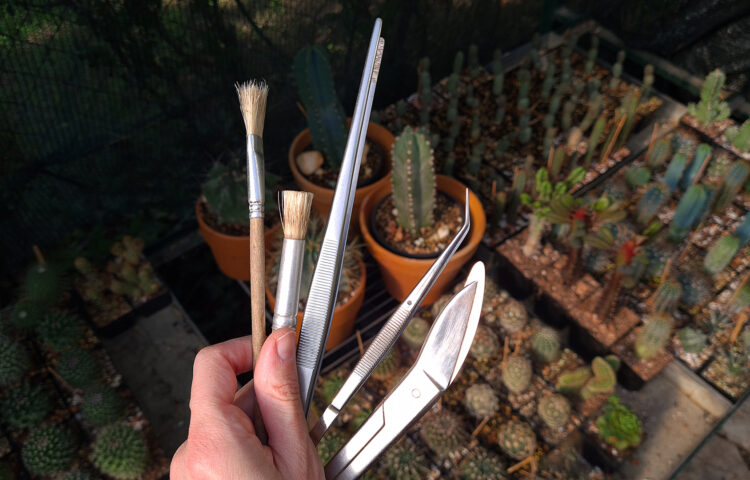My prickly lesson
Cacti are… well prickly. Having lived around them for the better part of my life, I guess by now, I must’ve gotten pricked over a thousand times.
As you might guess, most of the equipment that you may need for tending to cacti is not that different from those needed by any gardener, but think of rose gardeners if you want to play it on the safe side.
Safety first
So the first tool I advise you to get would be gardening gloves. Any will keep you away from the dirt and insects, but you should be looking for those that offer good protection. I’ve tried everything from rubber to leather, none managed to keep me safe. But anyway, I prefer to repot cacti with my bare hands and I’ve learned to do so over the years. But if you’re inexperienced, please don’t forget that tending to some cacti species can be really dangerous.
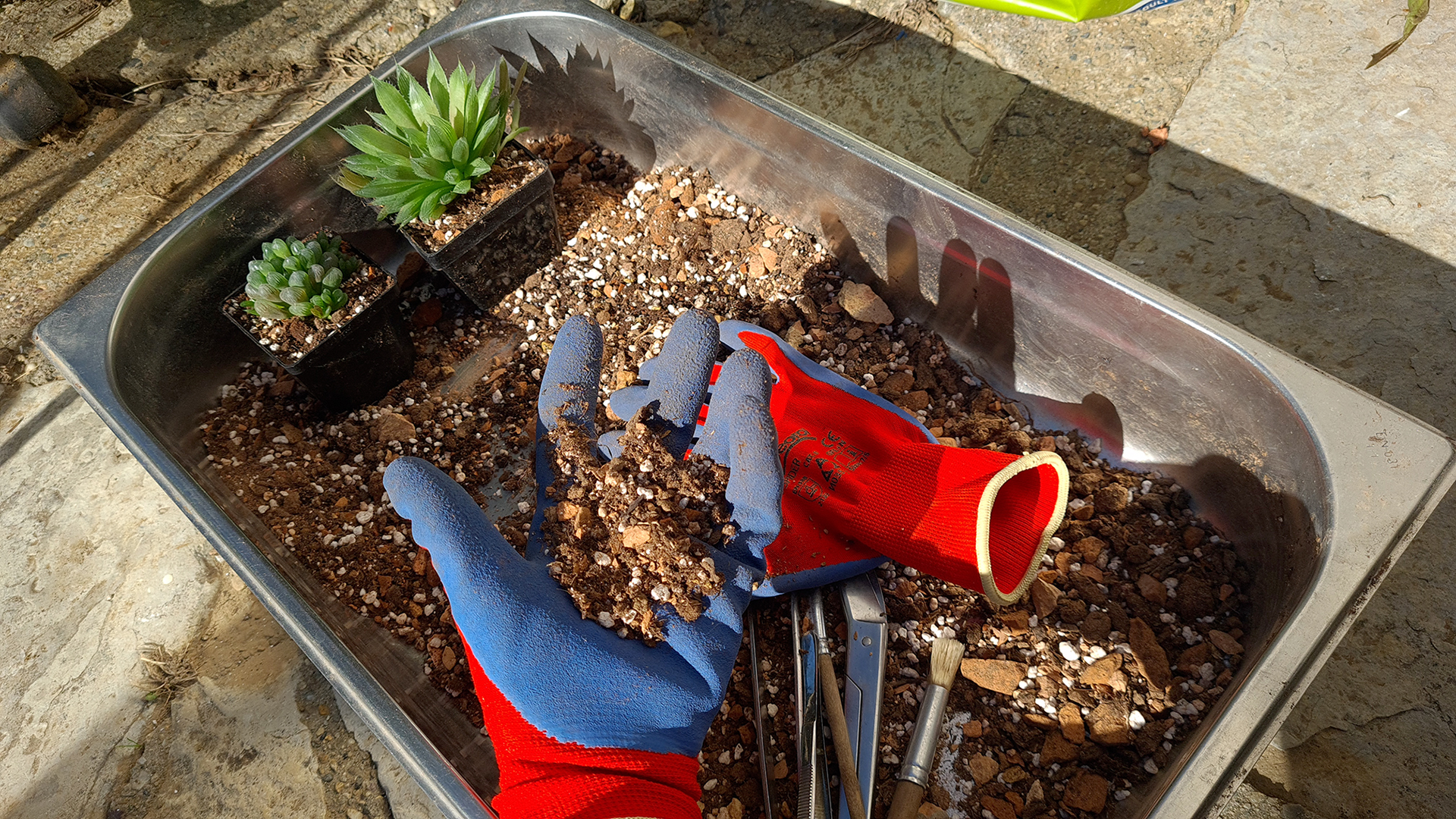
Safety brings me to the second most essential tool for cacti growers… the tweezers. These are a multi-purpose tools, and whether they are advertised as made for gardening, for kitchen or as medical equipment, they’ll do the work. Look for the appropriate length and function, and make sure they made of stainless steel. I own a 25cm long ‘square tip’ type and a 16cm long ‘curved tip’ type, that offers higher precision. I was given the latter by my dentist, when I asked if he had disposable leftovers. I use them for different things instinctively, but generally, they come in handy when you need a tool for holding, straightening up, moving, cleaning, repotting or pollinating cacti. Hold them on the part marked for gripping, and don’t tuck your middle finger under the tweezers, like you would for holding a pencil. Some people also use tongs for handling larger or pricklier cacti. It’s better to use plastic tongs that don’t have sharp edges. Make sure you don’t press cacti too strongly to avoid causing damage.
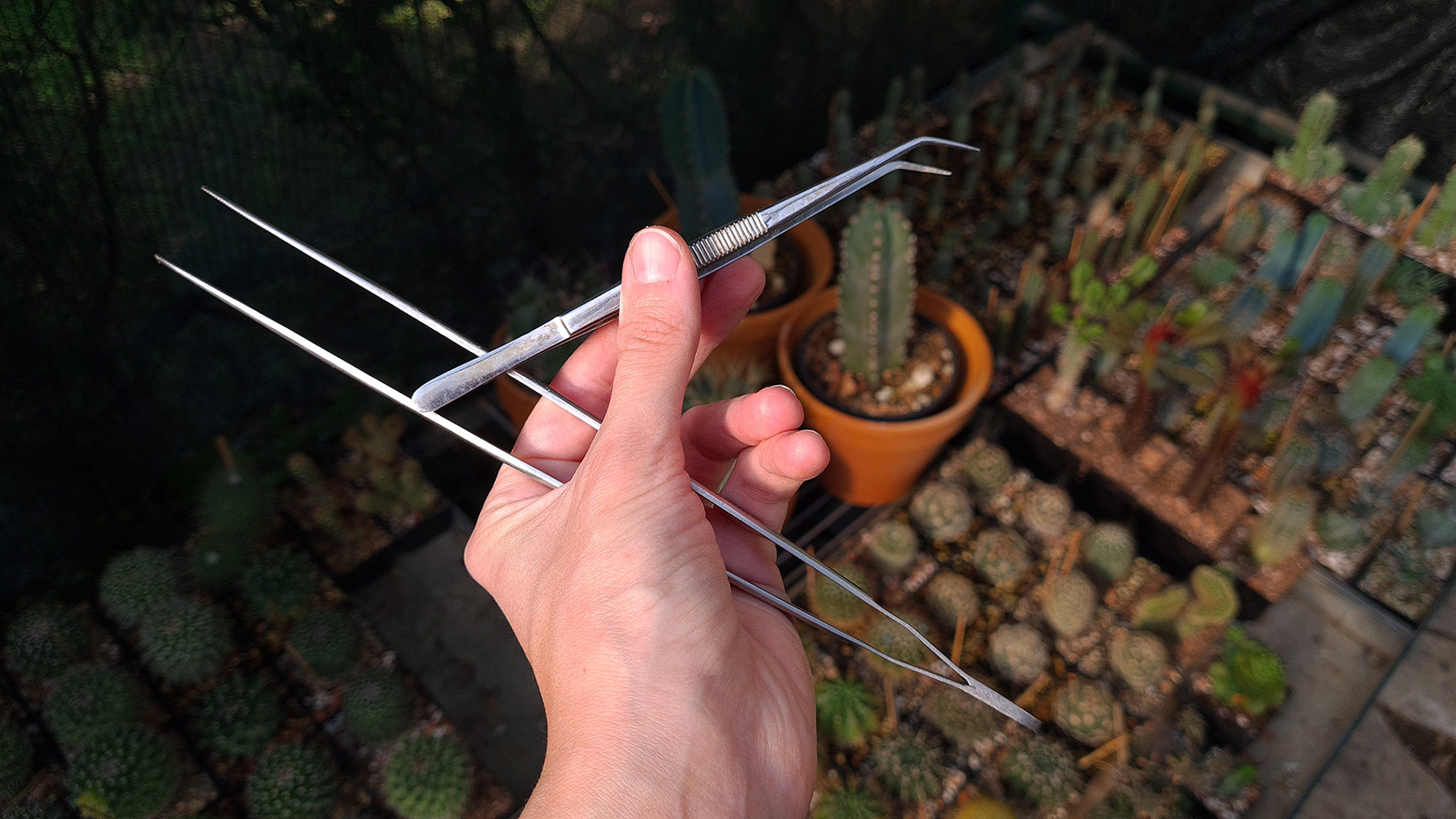
Watering
Now that we’re on the safe side, lets discuss watering can and garden pump sprayers. Whether you want to use something you already have or you want to invest in a professional piece of equipment, don’t forget that with cacti and other succulents, you should avoid hitting plants hard with water and prevent having excess water poured on them. Having cacti in excess water in a non-porous potting mix or soil can result in infection and diseases, such as root rot. The end of a garden hose of a watering can should be a rosette, and the rosette should have small openings, so it disperses water in a way that imitates rain, and makes it gentler for the plants. As for the pump sprayers, I don’t use professional equipment, but affordable 2,5L and 1,5L models, as they feel easy in the hand. If you want your plants to thrive, don’t forget that some genera, like Mammillaria, prefer watering by absorbing water from trays or tubs.
Handling potting media
A trowel is more important for outdoor gardening than container gardening, as it’s most typically used to loosen up soil and rake through compacted dirt. As I only plant in pots and I don’t mind getting my hands dirty, I don’t find much use for it. Nor for spoons that many people use for inserting potting media into containers when space is getting tight.
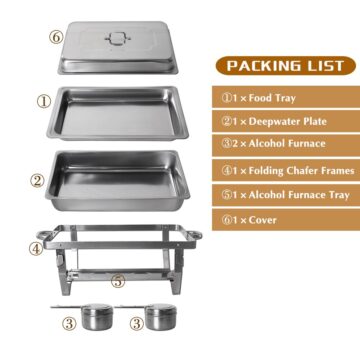
As the container for mixing potting medium you can use pretty much anything that can hold enough volume or simply mix ingredients on any flat surface. I use a piece of professional restaurant equipment called deepwater plate, that is used for buffet catering. I sourced two from a local restaurant upon its closure. It holds about 15L of substrate that you can work with without any spilling. The best thing about it is that it cleans perfectly, so one minute I can be using a substrate mix with warmcastings, then wash it with dishwashing liquid, then use it for mixing sterile substrade for sowing seedlings.
Occasionally, for bigger volumes of substrate, I use a friend’s concrete mixer that he bought for mixing substrate for his big collection.
Planting and arranging
A material that may come in handy is net, for instance, window net, that can be cut into pieces and used to cover larger drainage holes in pots.
Tools that will come in handy are pruners and scissors. Never use scissors in place of pruners. They are not as sharp and won’t give you clean cuts on thicker plants. Cuts that are not clean can lead to infections and diseases. Use scissors only for delicate works, such as cutting roots.
Some succulents need support in order to root properly, grow, or you just want to see grow straight. Sticks and clamps can be useful. They can be found in gardening stores. My life is made easier by the fact that we have 3 square meters in our garden where we grow different species of bamboo. It’s a renewable source of sticks (bamboo is closely related to grass).

Paining brushes of different length and density are ideal tool for cleaning cacti. I regularly use them for cleaning roots, and unfortunately on more than one occasion I had to use them to mechanically remove mealy bug eggs.
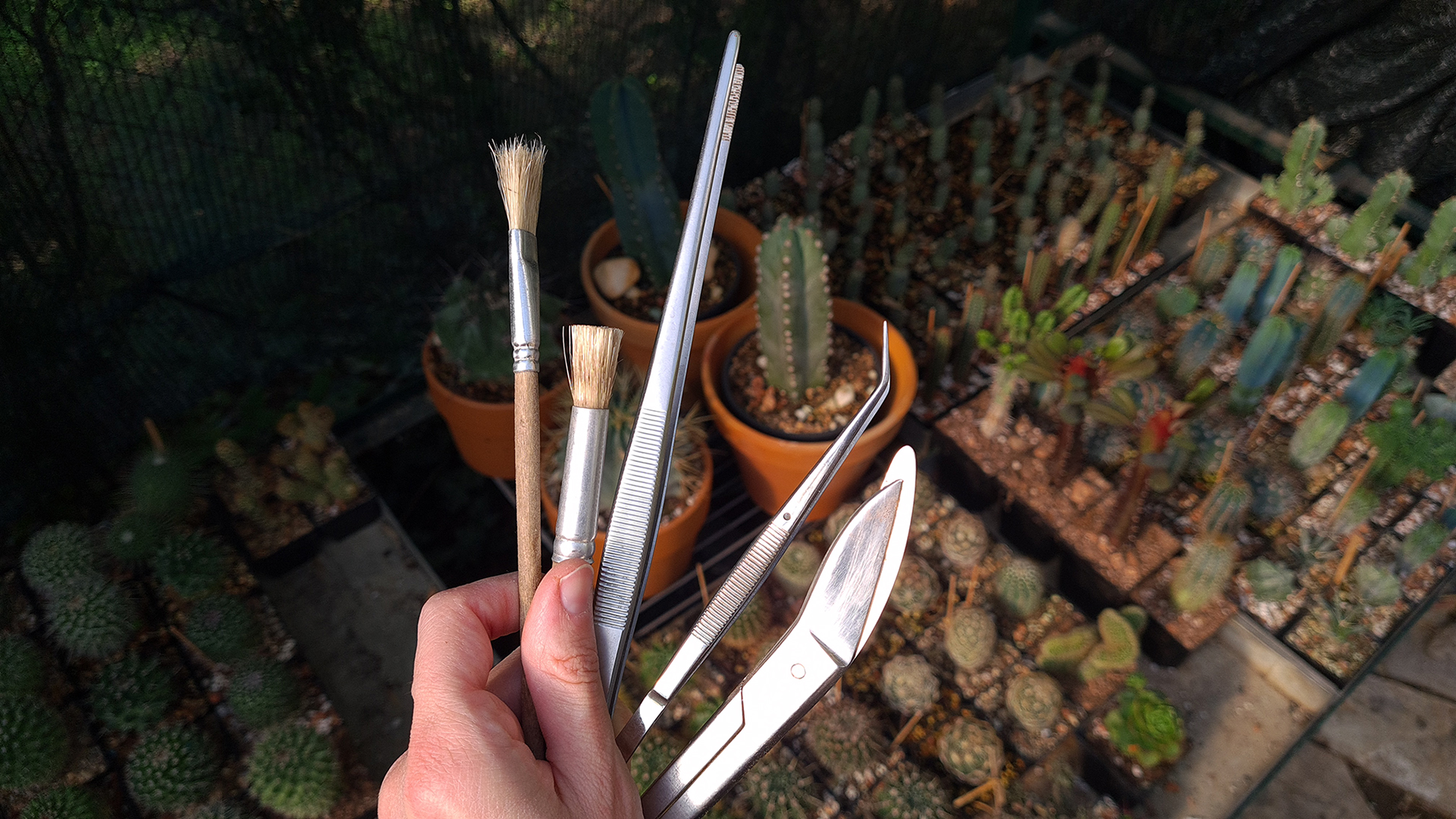
To avoid getting pricked when sorting out pots of pricklier genera, I used a surgical tool called hemostat. It took me a while to get used to it, but it’s perfect for the job.
I think I have all the tools that I need. I once watched a YouTube video where a master garderner had a belt where he kept his essentials, such as pruners. It look quite useful as I have the worst work habit of not keeping it all in one spot, so I often waste time by looking for a piece of equipment that I need.

